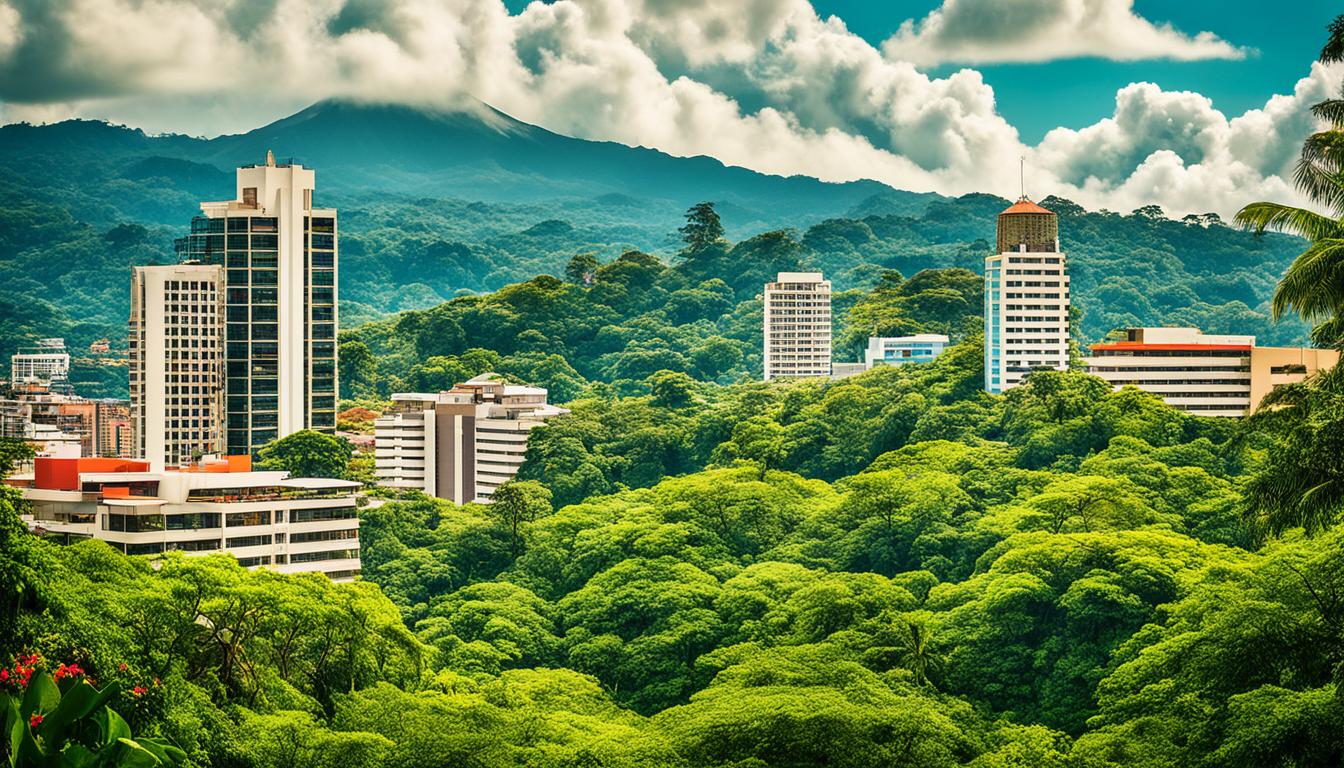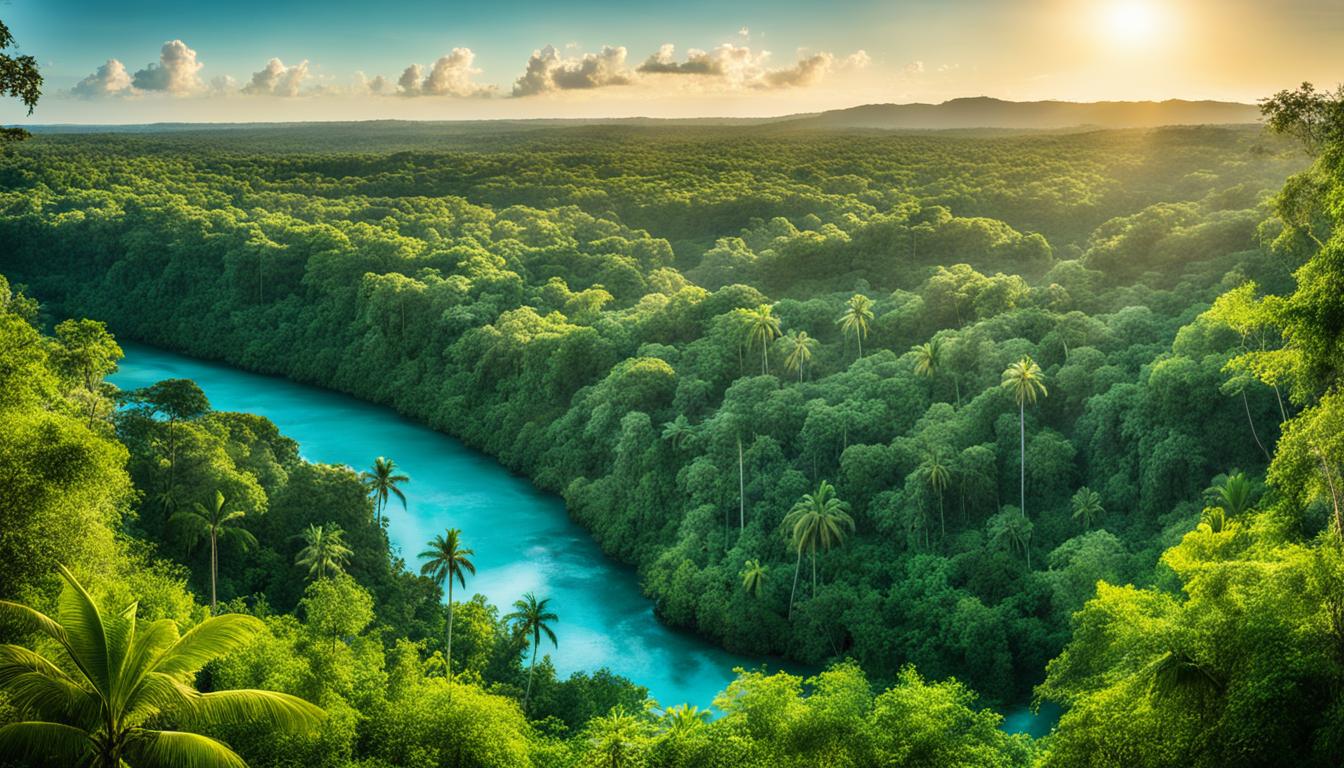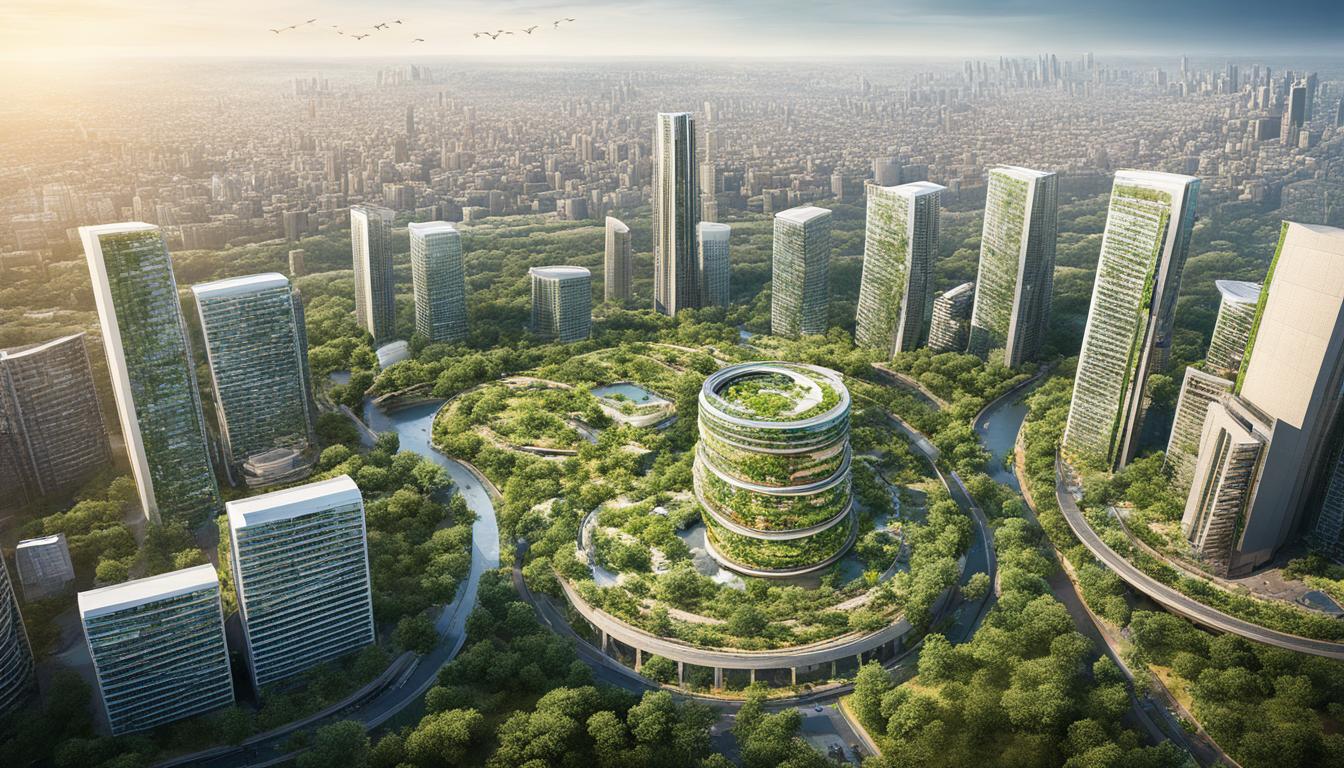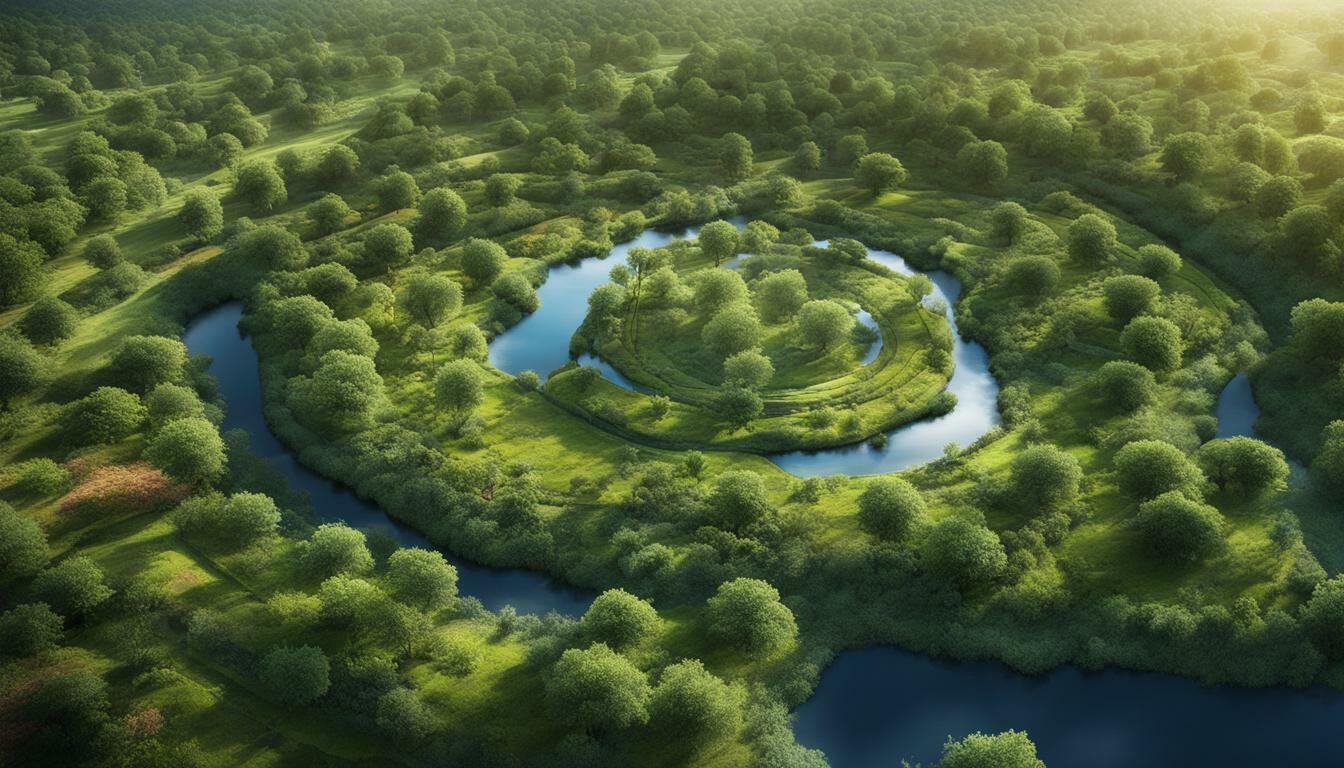Croatia Biodiversity and the Built Environment
Welcome to our article series on Croatia’s efforts in biodiversity conservation and sustainable development. In this first section, we will explore the importance of Croatia’s biodiversity and its relationship with the built environment. We will also delve into topics such as environmental impact assessment, urban planning, green infrastructure, and nature-based solutions. Join us as we discover the strategies and initiatives implemented in Croatia to protect its rich natural heritage while promoting sustainable growth.
Key Takeaways:
- Croatia’s Strategy and Action Plan for the Protection of Biological and Landscape diversity is a crucial document in nature protection.
- The country recognizes and promotes green infrastructure as a means to conserve biodiversity.
- Highway construction in Croatia includes the creation of green bridges to safeguard wildlife movements.
- The Lonjsko Polje Nature Park combines ecological diversity with floodwater storage.
- The DRAVA LIFE project focuses on improving river ecosystem health and increasing awareness of Natura 2000 sites.
Croatia’s Green Infrastructure Initiatives
When it comes to green infrastructure, Croatia is making significant strides in conservation projects and sustainable urban planning. These initiatives prioritize the protection of natural and cultural landscapes, ensuring a balance between development and environmental preservation.
One notable project is IBM – Central Posavina, which focuses on integrated basin management. By considering the entire ecosystem of the Posavina region, this project aims to protect and enhance the natural resources in the area.
The European Green Belt in Croatia is another important initiative. It aims to establish a network of protected areas that span across 24 countries, including Croatia. This effort recognizes the value of connecting highly valuable natural areas, promoting biodiversity and resilience.
The Drava and Mura Rivers, along with the transboundary UNESCO Biosphere Reserve “Mura-Drava-Danube,” play a crucial role in Croatia’s green infrastructure. These waterways connect valuable natural areas not only within Croatia but also across neighboring countries, promoting collaboration and conservation efforts.
To ensure safe passage for wildlife, including large carnivores, Croatia has implemented the construction of “green bridges” along highways. These bridges provide a vital connection for animal habitats, mitigating the negative impacts of transportation infrastructure on wildlife populations.
The city of Zadar is actively participating in the Horizon 2020 project GrowGreen. With a focus on nature-based solutions, this project aims to enhance climate and water resilience through innovative urban planning strategies in Croatia.
Examples of Green Infrastructure Initiatives in Croatia
| Project | Description |
|---|---|
| IBM – Central Posavina | A project focusing on integrated basin management in the Posavina region, emphasizing the protection and enhancement of natural resources. |
| European Green Belt | A network of protected areas that spans across 24 countries, promoting biodiversity and connectivity between natural areas in Croatia and beyond. |
| “Green Bridges” along Highways | Construction of wildlife passages along highways to ensure safe migration for wildlife, particularly large carnivores. |
| Horizon 2020 project GrowGreen | An initiative focusing on nature-based solutions for climate and water resilience in urban areas, with active participation from the city of Zadar. |
Mainstreaming Green Infrastructure in Croatia
The integration of green infrastructure into various sectors is a key aspect of Croatia’s commitment to nature protection and sustainable development. The implementation of nature protection requirements and the assessment of environmental impacts play a crucial role in ensuring the preservation of Croatia’s ecological network.
The Nature Protection Act and Incorporation of Nature Protection Requirements
The Nature Protection Act in Croatia mandates the incorporation of nature protection requirements in physical planning documents and sectorial management plans. This ensures that nature conservation principles are integrated into the decision-making processes of land use planning and resource management. By considering the ecological aspects, Croatia aims to achieve a balanced approach that promotes both development and biodiversity conservation.
Strategic Environmental Assessment and Nature Impact Assessment
The Strategic Environmental Assessment (SEA) procedure is an essential tool in Croatia’s policy strategies. It ensures that nature impact assessments are conducted to evaluate and mitigate the potential environmental effects of proposed policies and plans. By incorporating nature considerations into strategic decision-making, Croatia strives to minimize adverse impacts on its ecological network.
The Natura 2000 Network
The Natura 2000 network, designated in Croatia under the Habitats and Birds Directives, encompasses a significant land and marine area. This network aims to protect and preserve valuable habitats and species of European importance. Croatia’s commitment to the Natura 2000 network ensures the conservation and sustainable management of its ecological resources.
Nature Protection Requirements in Agriculture and Forestry
Agricultural and forestry practices in Croatia integrate nature protection requirements to safeguard biodiversity and ecosystem services. By adopting sustainable farming practices and responsible forestry management, Croatia aims to minimize the negative environmental impacts while maintaining the productivity and economic viability of these sectors.
Spatial Planning and Ecological Network Impact Assessment
Spatial planning in Croatia is subject to Ecological Network Impact Assessment, which takes into account nature protection regulations and the requirements of the ecological network. This assessment helps identify potential conflicts and provides guidance for sustainable land use planning that respects the needs of both humans and nature.
Collaboration between Water Management and Nature Protection
Water management and nature protection sectors collaborate through the assessment of annual water maintenance works. This ensures that actions taken in water management projects consider the ecological requirements and conservation goals, promoting the coexistence of water infrastructure and biodiversity.
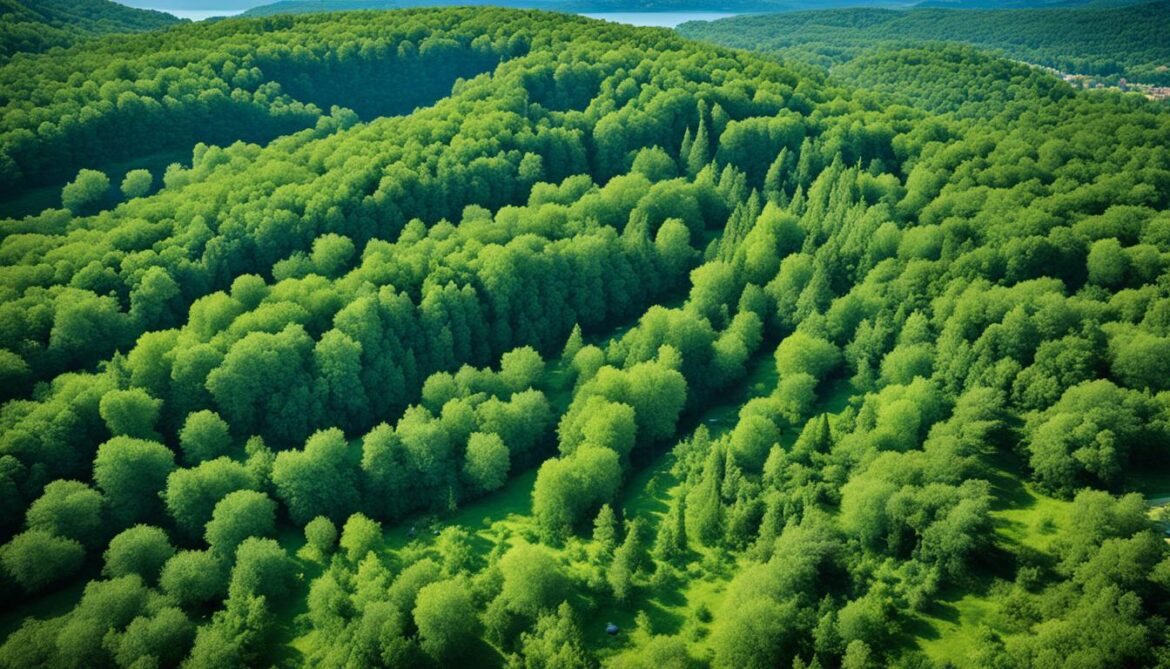
In conclusion, Croatia’s commitment to integrating green infrastructure and nature protection requirements into its policies and planning processes is crucial for maintaining the ecological integrity of the country. By mainstreaming nature conservation principles and conducting environmental impact assessments, Croatia strives to strike a balance between development and the preservation of its ecological network.
Forests and Karst Habitats in Croatia
Forests play a crucial role in Croatia’s natural landscape, covering an impressive 44% of the country’s land area. These forests harbor diverse ecosystems and valuable species, contributing to the rich biodiversity of the region. In the south, Croatia boasts Mediterranean forests, while in the north, European-Siberian forests dominate the landscape. However, forest degradation is a growing concern, particularly for species such as the common fir and others.
Croatia is also renowned for its stunning karst landscapes, which cover an expansive 54% of the territory. These karst areas exhibit unique geological phenomena and support a wide array of plant and animal life. Within the karst, one can find relict taxa and unique endemic species that have adapted to thrive in this distinctive environment.
It is important to note that karst habitats in Croatia are facing significant threats due to industrial development, transportation infrastructure, and modern agricultural practices. These activities pose a risk to the delicate balance of this fragile ecosystem and can result in the loss of biodiversity and ecological degradation.
The Karst Landscape of Croatia:
Spanning across the country, Croatia’s karst landscapes offer a mesmerizing display of nature’s wonders. From dramatic limestone cliffs to intricate cave systems, there is much to explore and appreciate. The karst provides a habitat for numerous plant species and supports a diverse range of wildlife, including birds, mammals, and reptiles.
One prominent example of the karst landscape in Croatia is the famous Plitvice Lakes National Park. This UNESCO World Heritage site is renowned for its cascading waterfalls, crystal-clear lakes, and vibrant flora. The park offers a glimpse into the unique hydrological and ecological processes that shape the karst landscape.
Another notable karst feature is the Velebit Mountain, which stretches along the Adriatic coast. The Velebit is home to several endemic species, including the Croatian endemic Edraianthus serpyllifolius, a striking purple flower found only in this region.
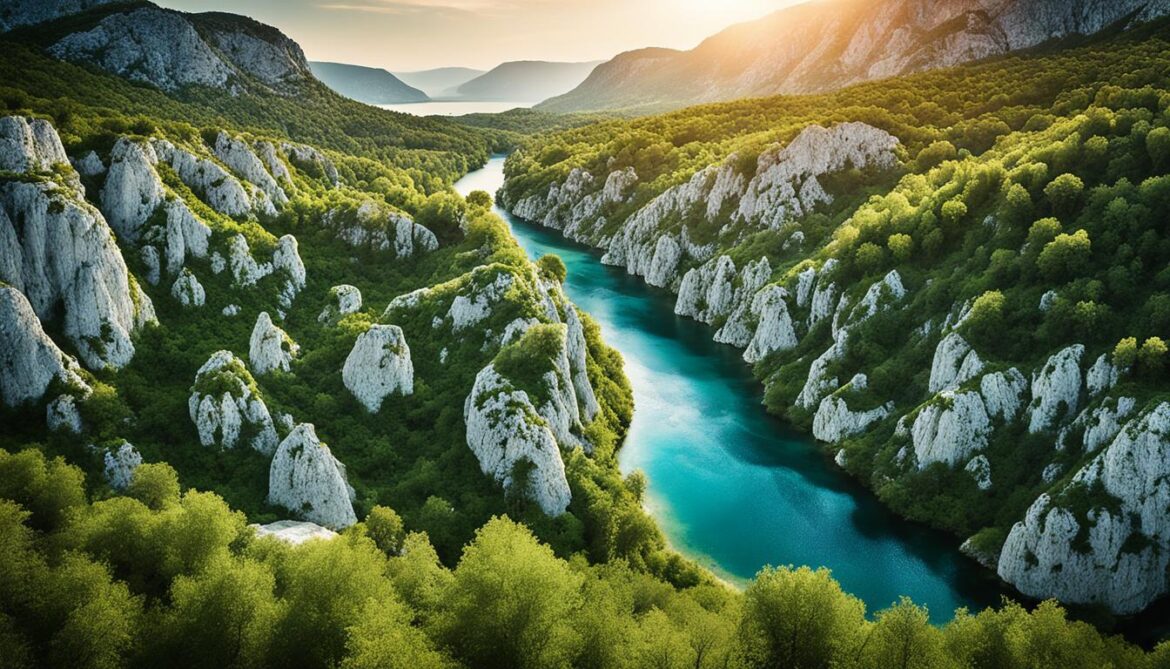
Preserving Croatia’s Forests and Karst Habitats:
Recognizing the importance of these ecosystems, efforts are underway to protect and preserve Croatia’s forests and karst landscapes. Conservation initiatives focus on promoting sustainable land-use practices, raising awareness about the ecological value of these habitats, and implementing measures to mitigate the impact of human activities.
It is important that stakeholders, including government bodies, conservation organizations, and local communities, collaborate to develop effective strategies for forest management and karst conservation. Through responsible land management, the degradation of forests can be minimized and the unique karst habitats can be safeguarded for future generations.
By highlighting the ecological significance of forests and karst environments, Croatia can work towards striking a balance between development and environmental preservation. Protecting these natural treasures will not only ensure the survival of diverse species but also contribute to the overall resilience and sustainability of the country’s natural heritage.
The State of Biodiversity in Croatia
Croatia is home to a rich diversity of species, with approximately 40,000 known taxa that have protected status. The country’s commitment to nature conservation is evident through the extensive areas under protection. About 8.4% of Croatia’s territory is safeguarded through various forms of national protection measures.
In addition, Croatia has established the Natura 2000 ecological network, covering a significant portion of the land territory and territorial sea. The Natura 2000 network spans 36.9% of the land territory and 16.6% of the territorial sea, highlighting the country’s efforts in preserving natural habitats and species.
Efforts have been made to monitor and inventory biodiversity in Croatia. By establishing robust monitoring systems, authorities can gather essential data about species populations, trends, and conservation needs.
The Adriatic Sea, a significant ecological feature in Croatia, boasts a generally high ecological status. The country’s beaches also maintain excellent water quality, contributing to a thriving coastal ecosystem.
Despite these achievements, challenges persist, particularly in managing fish stocks in the Adriatic Sea. Balancing the growth of tourism with the conservation of protected areas requires careful planning and sustainable practices.
“Croatia’s biodiversity is a treasure worth protecting. Our commitment to nature conservation and sustainable practices will ensure the long-term preservation of our natural heritage for future generations.” – Croatian Ministry of Environment and Energy
The Protection of Endangered Species in Croatia
Croatia places great importance on the preservation of endangered species. The country has designated protected areas to safeguard habitats crucial for the survival of these species. Additionally, strict regulations and enforcement play a significant role in preventing illegal activities that threaten these vulnerable populations.
Here are some examples of the protected species in Croatia:
| Protected Species | Conservation Status |
|---|---|
| European brown bear | Endangered |
| Golden eagle | Vulnerable |
| European otter | Near threatened |
| Dalmatian pelican | Vulnerable |
| Croatian pond turtle | Critically endangered |
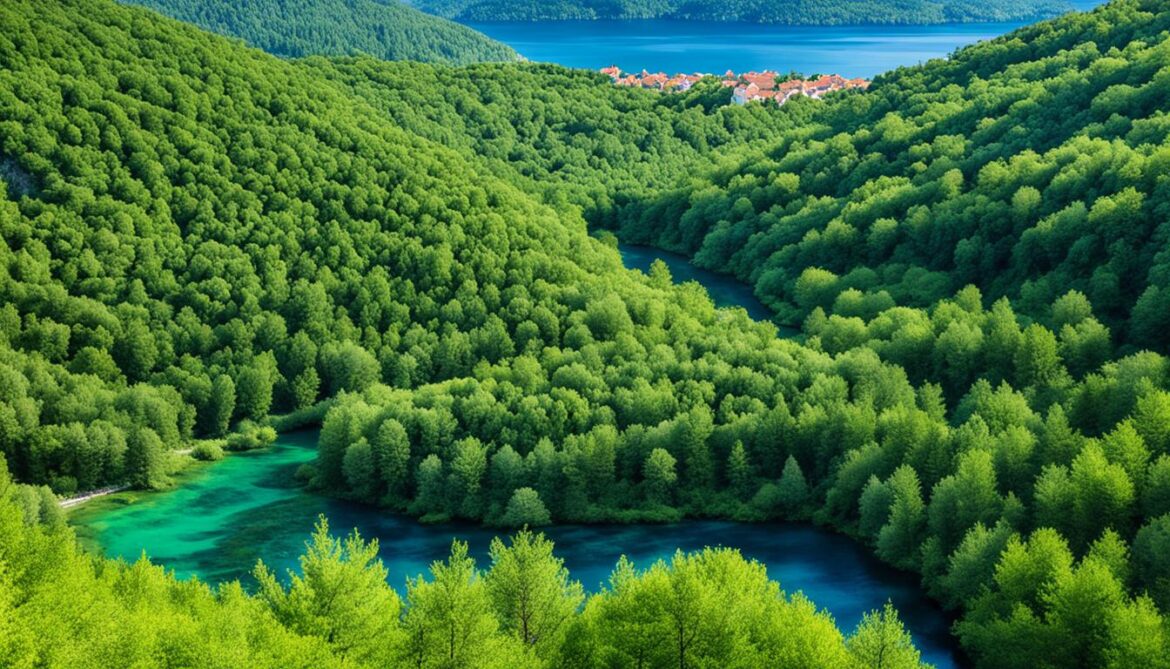
The conservation of these protected species is essential for maintaining the ecological balance in Croatia. Efforts are being made to enhance conservation measures, strengthen habitat protection, and raise awareness about the importance of nature conservation among the public and stakeholders.
Environmental Challenges and Policy Framework in Croatia
Croatia faces various environmental challenges that require effective policies and legislative frameworks to ensure environmental protection. These challenges include:
- Air pollution
- Water management
- Waste management
- Sustainable tourism
The Croatian government has implemented several policies and legislation to address these challenges and protect the environment. Some notable initiatives are:
- The Air Quality Protection and Improvement Plan
- The Water Management Strategy
- The new Act on Sustainable Waste Management
These measures aim to reduce air pollution, improve water management practices, and promote sustainable waste management in the country.
Croatia is also committed to reducing greenhouse gas emissions and increasing the share of renewable energy in its energy consumption. This demonstrates the country’s dedication to sustainable development and combating climate change.
Furthermore, Croatia actively participates in international cooperation efforts and complies with European Union regulations to ensure environmental protection at both national and international levels.
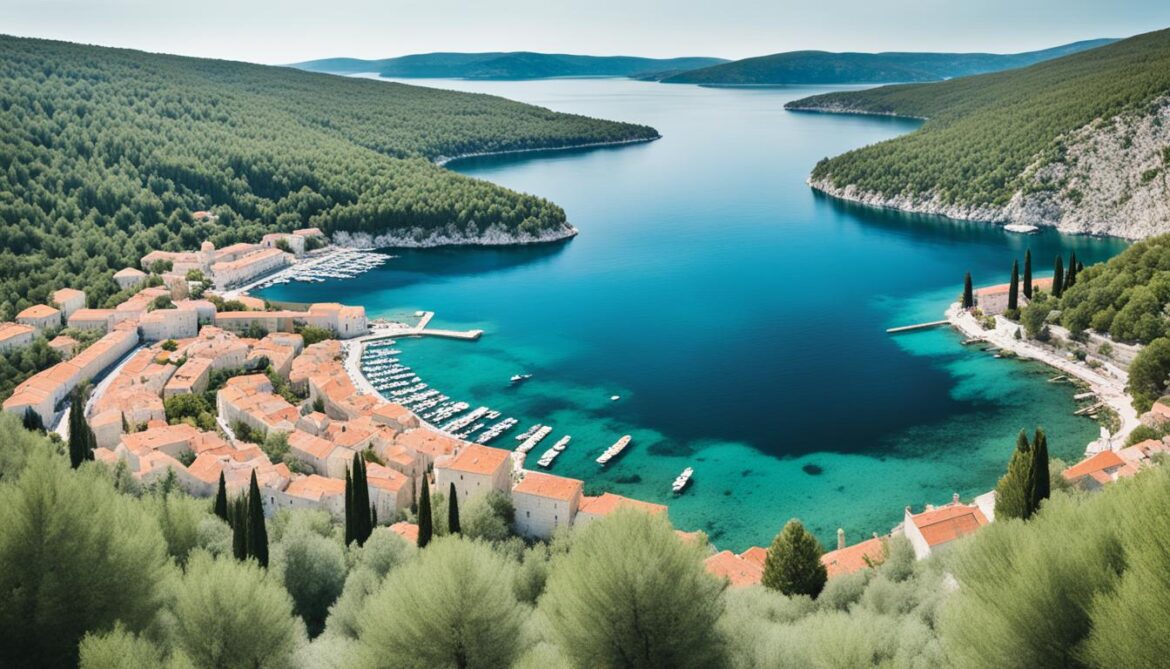
In conclusion, Croatia recognizes the importance of addressing environmental challenges and has implemented a robust policy framework to protect the environment. By focusing on air and water quality, waste management, and sustainable tourism, Croatia is working towards a greener and more sustainable future.
Conclusion
Croatia has made significant strides in striking a balance between biodiversity conservation and urban planning, all while fostering sustainable development. The country’s commitment to protecting its natural resources and promoting green infrastructure is commendable. By integrating nature protection requirements into various sectors, Croatia has taken a proactive approach towards ensuring the long-term sustainability of its built environment.
The evaluation of ecosystem services’ economic value and the promotion of nature-based solutions are indicators of Croatia’s forward-thinking approach. However, challenges in managing threats to biodiversity and mitigating environmental impacts persist. It is essential for continued collaboration and the implementation of conservation measures to secure the future of Croatia’s rich biodiversity and maintain a harmonious coexistence between nature and urban development.
With ongoing dedication to green initiatives and the integration of nature into urban planning, Croatia can pave the way for other nations in biodiversity conservation. By tackling the remaining challenges head-on and emphasizing the sustainable use of its resources, Croatia can serve as an inspiration for a more environmentally conscious future.




